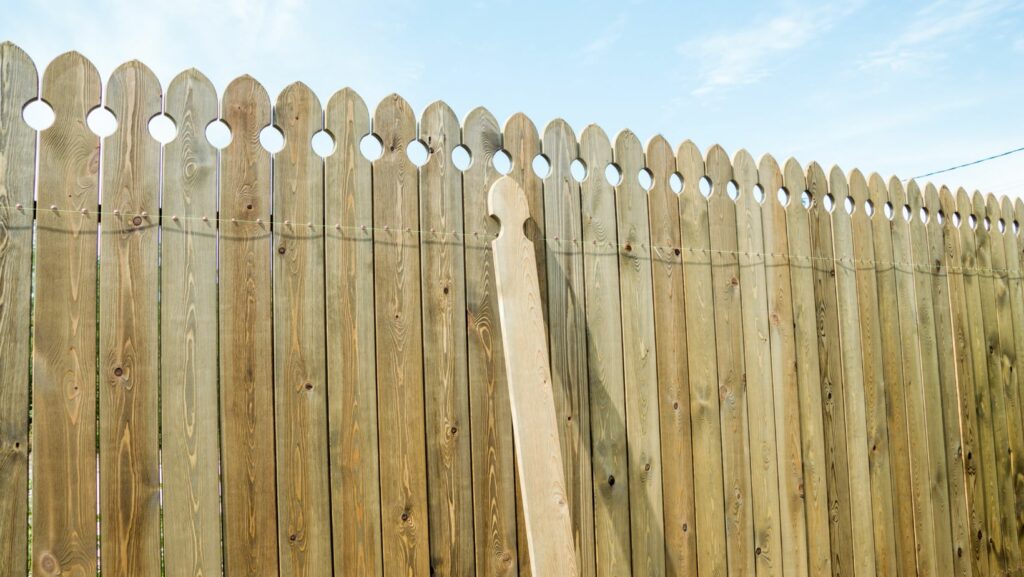Introduction
Timber remains one of the most versatile, sustainable, and aesthetically pleasing building materials available for outdoor construction. From garden decking and fencing to sheds, pergolas, and raised beds, wood brings natural warmth and character to exterior spaces whilst offering excellent structural properties when properly selected and maintained. However, not all timber is created equal, and choosing the right type for your specific project can mean the difference between a structure that lasts decades and one that deteriorates within a few years. Understanding the differences between treated and untreated timber, knowing which species suit particular applications, and learning proper installation techniques are essential skills for any DIY enthusiast or professional tradesperson. This comprehensive guide explores everything you need to know about selecting, working with, and maintaining timber for outdoor projects, ensuring your investment delivers lasting beauty and functionality.
Understanding Timber Treatment and Preservation
Why Treatment Matters for Outdoor Timber
Untreated timber exposed to the elements faces multiple threats—moisture penetration leading to rot, fungal decay, insect infestation, and UV degradation that causes splitting and warping. These factors can dramatically shorten timber lifespan, particularly in the damp British climate where rain, humidity, and temperature fluctuations are common throughout the year.
Treatment processes infuse timber with preservative chemicals that protect against these threats, significantly extending serviceable life. Pressure-treated timber, for instance, can last 15-40 years depending on the treatment level and exposure conditions, compared to just 2-5 years for untreated softwood in ground contact.
Treatment Methods and Standards
The most common treatment method involves placing timber in pressure vessels where preservatives are forced deep into the wood structure, ensuring protection isn’t merely surface-level but penetrates throughout. Different treatment levels (referred to as Use Classes) correspond to exposure severity—from UC1 for internal dry conditions to UC4 for ground contact and UC5 for marine environments.
For typical garden projects like fencing, decking, and outbuildings, sawn treated timber with UC3 or UC4 ratings provides appropriate protection against moisture, decay, and insect damage. These treatment levels ensure timber maintains structural integrity even when exposed to weather or in contact with soil.
Environmental Considerations
Modern timber treatments have evolved significantly from older copper-chrome-arsenic formulations that raised environmental and health concerns. Contemporary preservatives use copper-based compounds that effectively protect timber whilst meeting stringent environmental and safety standards. These treatments are safe for use in gardens, around children and pets, and near edible plants once the timber has fully dried after treatment.
Choosing sustainably sourced timber from certified forests ensures your projects support responsible forestry practices. Look for FSC (Forest Stewardship Council) or PEFC (Programme for the Endorsement of Forest Certification) certification, which guarantees timber comes from well-managed, sustainable sources.
Popular Timber Species for Outdoor Use
Softwoods: Affordable Versatility
Softwoods, primarily from coniferous trees like pine, spruce, and fir, dominate the outdoor construction market due to their affordability, availability, and ease of working. When pressure-treated, these species provide excellent durability for most garden applications.
Redwood pine offers good natural resistance to decay even before treatment, making it a popular choice for fencing and outdoor structures. Its straight grain and consistent quality facilitate easy cutting, drilling, and fixing, making it ideal for DIY projects.
Hardwoods: Premium Durability
Hardwoods from deciduous trees generally offer superior density and natural durability compared to softwoods, though at significantly higher cost. Oak, for example, contains natural tannins that resist decay, making it exceptionally long-lasting even with minimal treatment.
For projects where appearance and longevity justify premium investment—such as garden furniture, decorative features, or high-visibility structures—hardwoods deliver unmatched beauty and performance. However, their density makes them more challenging to work with, requiring sharp tools and pre-drilling for fixings.
Modified Timber Options
Thermally modified timber undergoes heat treatment that fundamentally alters wood structure, dramatically improving stability and rot resistance without chemical preservatives. This environmentally friendly alternative appeals to those seeking sustainable options, though it typically commands premium pricing.
Acetylated timber represents another modification process that makes wood exceptionally durable and stable. These options suit specific applications where chemical-free preservation is essential, such as near water features or organic vegetable gardens.
Essential Project Applications
Fencing and Boundary Structures
Fencing represents one of the most common outdoor timber applications. Treated timber posts must withstand ground contact and weather exposure, making proper treatment level crucial. Posts should be UC4 rated minimum, whilst panels and rails can use UC3 rated timber.
Setting posts in concrete rather than directly in soil significantly extends lifespan by preventing moisture wicking from surrounding earth. Gravel boards at fence bases protect panels from ground splash and moisture, further prolonging fence life.
Decking and Outdoor Flooring
Decking timber must withstand foot traffic, furniture weight, and constant weather exposure, making treatment and species selection critical. Anti-slip grooved profiles improve safety in wet conditions, whilst proper spacing between boards (typically 5-8mm gaps) allows drainage and airflow that prevent moisture accumulation.
Supporting framework requires particular attention—joists and bearers should match or exceed decking board treatment levels. Adequate ventilation beneath decking prevents moisture buildup that could compromise the structure even when using treated timber.
Garden Buildings and Structures
Sheds, summerhouses, pergolas, and gazebos all demand careful timber selection. Framework timber bears structural loads and requires adequate dimensions for strength—skimping on timber sizes to save costs often results in unstable structures that deteriorate prematurely.
Roof timbers face particularly harsh conditions with maximum sun exposure and water runoff. Ensuring proper treatment and applying additional protective coatings extends life significantly. Adequate roof overhang protects walls from rain, reducing moisture exposure to vertical timbers.
Raised Beds and Planters
Growing vegetables and flowers in raised beds has surged in popularity, but timber selection deserves careful thought. Whilst treated timber is safe for use around edible plants once dried, some gardeners prefer untreated hardwoods or larch for peace of mind, accepting shorter lifespan as a tradeoff.
Lining raised beds with plastic sheeting creates a barrier between soil moisture and timber, significantly extending bed life without compromising plant health or requiring frequent replacement.
Working with Timber: Practical Techniques
Proper Cutting and Preparation
When cutting treated timber, always wear appropriate PPE including dust masks, as sawdust from treated wood shouldn’t be inhaled. Cut ends expose untreated interior wood, making end grain particularly vulnerable to moisture penetration. Applying cut-end preservative to fresh cuts maintains protection continuity.
Allow timber to acclimatize to ambient conditions for several days before installation. This prevents excessive movement and warping after construction, ensuring joints remain tight and structures stay true.
Fixing and Fastening Best Practices
Using appropriate fixings is crucial for outdoor timber projects. Stainless steel screws and nails resist corrosion far better than standard steel, preventing unsightly rust stains and fixing failure. Galvanized fixings offer good corrosion resistance at lower cost, suitable for most garden applications.
Pre-drilling pilot holes prevents timber splitting, particularly near ends or edges where wood is more vulnerable. Countersinking screw heads slightly below the surface allows protective coatings to cover fixings completely, extending their life.
Finishing and Protection
Even treated timber benefits from additional protective finishes that enhance appearance and provide extra weather resistance. Wood stains, oils, and paints create barriers against UV damage and moisture whilst allowing personal aesthetic expression.
Decking oils penetrate wood surfaces, enhancing grain visibility whilst providing water repellency. Garden furniture benefits from UV-resistant oils that prevent greying and maintain rich natural tones. Reapplication every 1-2 years maintains protection and appearance.
Maintenance for Longevity
Regular Inspection and Care
Annual inspections identify developing issues before they become serious problems. Check for signs of rot, particularly where timber contacts soil or where water pools. Probe suspect areas with a screwdriver—soft, spongy wood indicates decay requiring attention.
Clear debris from around timber structures, as accumulated leaves and organic matter trap moisture against wood surfaces, accelerating decay even in treated timber. Ensure drainage remains effective, redirecting water away from timber bases.
Cleaning and Rejuvenation
Regular cleaning prevents algae, moss, and mildew buildup that makes surfaces slippery and accelerates degradation. Pressure washers effectively remove surface contamination, though excessive pressure can damage wood fibers—keep nozzles at least 300mm from surfaces and use fan spray patterns rather than concentrated jets.
After cleaning, allow timber to dry thoroughly before applying protective treatments. This ensures products penetrate effectively rather than sitting on damp surfaces where they’re less effective and may trap moisture within the wood.
When to Repair or Replace
Despite best efforts, outdoor timber eventually requires replacement. Structural components showing significant rot, particularly posts and load-bearing beams, need immediate attention for safety. Cosmetic issues like surface weathering or minor splitting may not require replacement—filling, sanding, and refinishing can restore appearance without full reconstruction.
Planning for eventual replacement from the outset—using modular designs and accessible fixings—makes future maintenance more manageable and cost-effective.
FAQ Section
How long does treated timber last outdoors?
Lifespan varies significantly based on treatment level, timber species, and exposure conditions. Properly treated softwood (UC4) in ground contact typically lasts 15-25 years, whilst above-ground applications (UC3) may last 30-40 years. Hardwoods and premium treatments can extend these timescales considerably. Regular maintenance including protective finishes and proper drainage significantly impacts longevity.
Can I paint or stain treated timber immediately after purchase?
No, freshly treated timber contains significant moisture from the treatment process and requires drying before accepting paints or stains. Wait 4-8 weeks depending on weather conditions, allowing the wood to reach appropriate moisture content. You can test readiness by sprinkling water on the surface—if it beads rather than absorbing, the timber is still too wet for finishing.

Is treated timber safe for use around children, pets, and vegetable gardens?
Modern copper-based treatments are safe for typical garden applications once timber has dried after treatment. However, avoid using preserved timber where it will be in direct, prolonged contact with food or drinking water. For raised vegetable beds, many gardeners prefer lining beds with barriers or choosing naturally durable untreated species like larch or oak for complete peace of mind.
What’s the difference between sawn and planed timber?
Sawn timber comes directly from milling with rough, textured surfaces showing saw marks, whilst planed timber undergoes additional processing to create smooth, consistent surfaces and precise dimensions. Sawn timber costs less and offers adequate performance for structural applications where appearance is secondary. Planed timber suits visible applications requiring smooth finishes and exact sizing for tight-fitting joints.
Do I need building regulations approval for timber garden structures?
Most small garden structures like sheds under 15 square meters, decking less than 300mm above ground, and fencing don’t require planning permission or building control approval. However, structures near boundaries, in conservation areas, or exceeding certain sizes may need approval. Always check with your local planning authority before starting significant projects, as requirements vary by location and specific circumstances.
Conclusion
Successful outdoor timber projects begin with informed material selection and continue through proper construction techniques and diligent maintenance. Understanding treatment levels, choosing appropriate species for specific applications, and following best practices for installation and care ensure your structures deliver decades of service whilst maintaining their aesthetic appeal. Whether you’re building a simple raised bed or embarking on an ambitious deck and pergola combination, the principles remain consistent—invest in quality materials, respect timber’s natural characteristics, protect it from its primary enemies of moisture and UV damage, and maintain it regularly. The natural beauty, workability, and sustainability of timber make it an ideal choice for outdoor construction, and with the knowledge provided in this guide, you’re well-equipped to undertake projects that enhance your garden whilst standing the test of time and weather.

